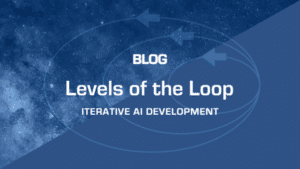 Neural networks, as a sub-symbolic data processing model, play a crucial role in the field of deep learning and generative AI. These networks, through their layered structures and interconnected nodes, mimic the neural connections in the human brain, allowing for the processing and interpretation of complex data patterns. This capability is fundamental to the advancement of AI technologies, enabling machines to learn from data in a way that is not explicitly programmed.
Neural networks, as a sub-symbolic data processing model, play a crucial role in the field of deep learning and generative AI. These networks, through their layered structures and interconnected nodes, mimic the neural connections in the human brain, allowing for the processing and interpretation of complex data patterns. This capability is fundamental to the advancement of AI technologies, enabling machines to learn from data in a way that is not explicitly programmed.
In contrast, symbolic AI, which encompasses the broader scope of AI, operates on a different paradigm. It relies on high-level, human-readable symbols to represent knowledge and uses logical reasoning to solve problems.
An AI reasoning system, like a detective, should use both deductive and inductive reasoning, but in a different manner. Deductive reasoning in AI involves drawing specific conclusions from general rules. For instance, if an AI is programmed with the rule that “all birds can fly,” and it’s given the input “a sparrow is a bird,” it will deduce that “a sparrow can fly.” Inductive reasoning in AI, on the other hand, involves learning general rules from specific examples. For example, an AI trained on a dataset of images might learn to recognize cats by inducing common features from the specific examples of cat images it has seen.
However, unlike a detective, an AI doesn’t have intuition or experience in the same sense. It makes decisions based on the data it has been trained on and the algorithms it uses to process that data. While a detective might consider context, emotions, or other human factors, an AI operates purely on logic and numerical data. Moreover, it uses constraints to limit the search space, assertions to define known truths, rules to guide the inferencing process, and heuristics to make educated guesses, thereby forming a robust framework for reasoning systems.
The interplay between these two approaches—sub-symbolic and symbolic—creates a powerful synergy. While neural networks excel at pattern recognition and prediction, symbolic AI shines in tasks that require logical reasoning and explicit knowledge representation. Together, they form a comprehensive AI system capable of tackling a wide array of tasks, from natural language processing to complex decision-making.
The detective analogy extends well into the realm of heuristics, which are particularly useful in situations where data is incomplete or ambiguous. Heuristics allow the system to apply practical methods derived from experience, often leading to solutions that are ‘good enough’ for the problem at hand. This approach is invaluable in real-world scenarios where perfect information is rarely available, and time constraints demand quick, yet reasonable, solutions.
In essence, the fusion of neural networks and symbolic reasoning systems represents the convergence of intuition and logic, pattern recognition and rule-based deduction, learning from data and applying predefined knowledge. This duality is at the heart of modern AI, enabling machines to not only learn and adapt but also to reason and explain, thus pushing the boundaries of what artificial intelligence can achieve. The ongoing research and development in this field continue to unveil new potentials and applications, making it an ever-evolving and exciting domain of technology.
Want to learn more? Contact us!


